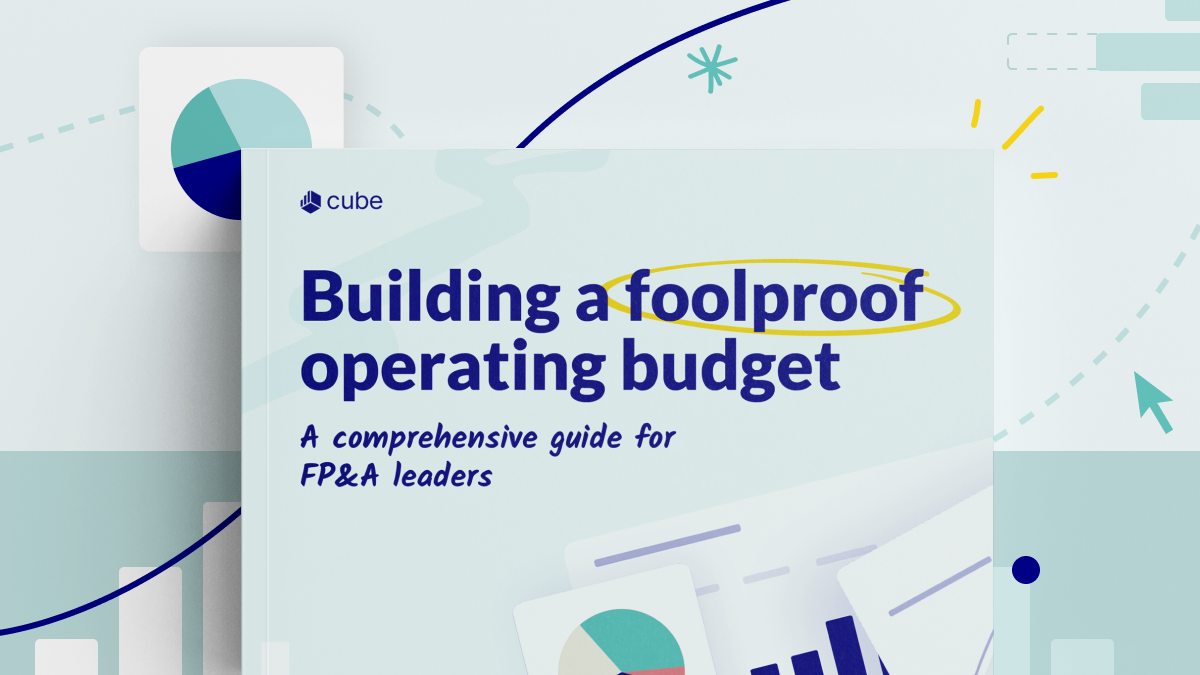Product
Solutions
resources
Company
Congrats on your score!
Your FP&A is Developing.
Your FP&A is developing, and you’re making great strides. Next step? Being consistent in your processes and automating tedious tasks to focus on strategic impact. Keep reading for more insights on where to go from here.
Grow your FP&A prowess
At this stage, you should look to standardize annual planning processes, implement advanced modeling techniques like scenario planning and modeling, and automate non-value-added tasks to focus time on strategic analysis and decision support.
Define annual planning
Document your annual planning process, including activities like data gathering, forecasting, budgeting, and reporting. Create templates, formats, and timelines for each activity, define roles and responsibilities, and implement SOPs.
Explore advanced modeling
Use rolling forecasts to provide better projections, scenario planning to model potential outcomes, and advanced analytics or ML to improve forecasting accuracy.
Leverage a full driver-based model
Include key factors driving your business, not just past data, to make more accurate and flexible forecasts. This helps finance and operations work better together, improving decision-making and planning.
Where are you on the path to strategic finance mastery?
1
Foundational
Laying groundwork
- Not yet fully aligned with the broader strategic goals of your company
- Work to be done to standardize the planning process outside of the annual budget
- Basic financial model and reporting
- Operating with unstructured data and no formal model or static model
2
Developing
Iterative improvements
- Finance part of decision-informing processes at a broader level
- Annual planning process (not clearly defined) but with occasional reporting to stakeholders
- Non-value-added tasks are automated. Starting to implement basic best practices, along with an annual planning process
- Leveraging a partially driver-based model
3
Defined
Holistic FP&A
- Finance provides critical insights and analysis that drive decision-making
- Defined planning process with regular reporting cadence and communication with stakeholders
- Clearly defined reporting, planning and performance management, and company-wide collaboration
- Fully driver-based model
4
Refined
Optimized XP&A
- Finance is fully connected to the strategy, and drives innovation, helping to shape strategic direction
- The annual planning process is defined where owners can drive updates and changes to/from finance independently with approvals
- Standardized performance management that reduces cost, improves speed, accuracy, and transparency of forecasts and reporting
- Leveraging a fully driver-based model with automation from users and systems
5
Masterful
XP&A mastery
- Finance is a key driver of change and is recognized as a strategic partner at the highest levels of the business
- Predictive / statistical forecasting is combined with performance management and iterative planning, replanning, reporting, analytics, and reforecasting
- Fully driver-based and in real-time
The guiding principles of strategic finance
Foresight
The proactive anticipation of future financial trends and challenges, enable companies to make informed decisions and strategic plans. This principle emphasizes the use of data analytics, scenario planning, and forecasting techniques to predict potential outcomes and mitigate risks.
Alignment
Financial strategies and goals should closely align with your business objectives and operational plans. Strategic leaders foster collaboration across departments, ensuring everyone works towards a common mission.
Storytelling
Storytelling in FP&A transforms complex financial data and analyses into compelling narratives that stakeholders can easily understand and act upon. Effective storytelling bridges the gap between financial experts and non-financial stakeholders, facilitating better decision-making.
Balance
FP&A involves managing the trade-offs between short-term financial performance and long-term strategic goals. Careful evaluation of risks and opportunities is a heavy weight on a finance leader’s shoulders. By striving for balance, organizations can navigate financial complexities while achieving both immediate and future objectives.
Learn from finance professionals just like you
“I think being a human in finance is a sometimes forgotten skill.”
Julia Coto
CFO, Chartspan Medical Technologies
"It's important that we reach across the line and talk to the stakeholders who are driving the revenue."
Rajat Wali
Director of Accounting & FP&A, Lawnstarter
“If you think that BvA is the only thing that finance does, you're missing a lot of what finance should be doing.”
Allen Michaelis
Senior Director of Finance, Bluewind Medical
“I think being a human in finance is a sometimes forgotten skill.”
Julia Coto
CFO, Chartspan Medical Technologies
"It's important that we reach across the line and talk to the stakeholders who are driving the revenue."
Rajat Wali
Director of Accounting & FP&A, Lawnstarter
“If you think that BvA is the only thing that finance does, you're missing a lot of what finance should be doing.”
Allen Michaelis
Senior Director of Finance, Bluewind Medical
Bookmark these FP&A
and finance resources
.webp)
Budgeting & Forecasting
Rolling forecasts: Definition, how to make one, and when to use them
Learn how to unlock the potential of rolling forecasts by harnessing their agility, adaptability, and accuracy to drive informed business decisions.
Read more

Building a Foolproof Operating Budget
Discover how to create an operating budget that’s scalable and guaranteed to help your company reach its goals.
Read more
%20(1).png)
Budgeting & Forecasting
6 biggest headaches for FP&A teams (and how to fix them)
Dive into the six biggest challenges FP&A teams face and discover quick, efficient solutions to overcome them.
Read more


.png)









.png)